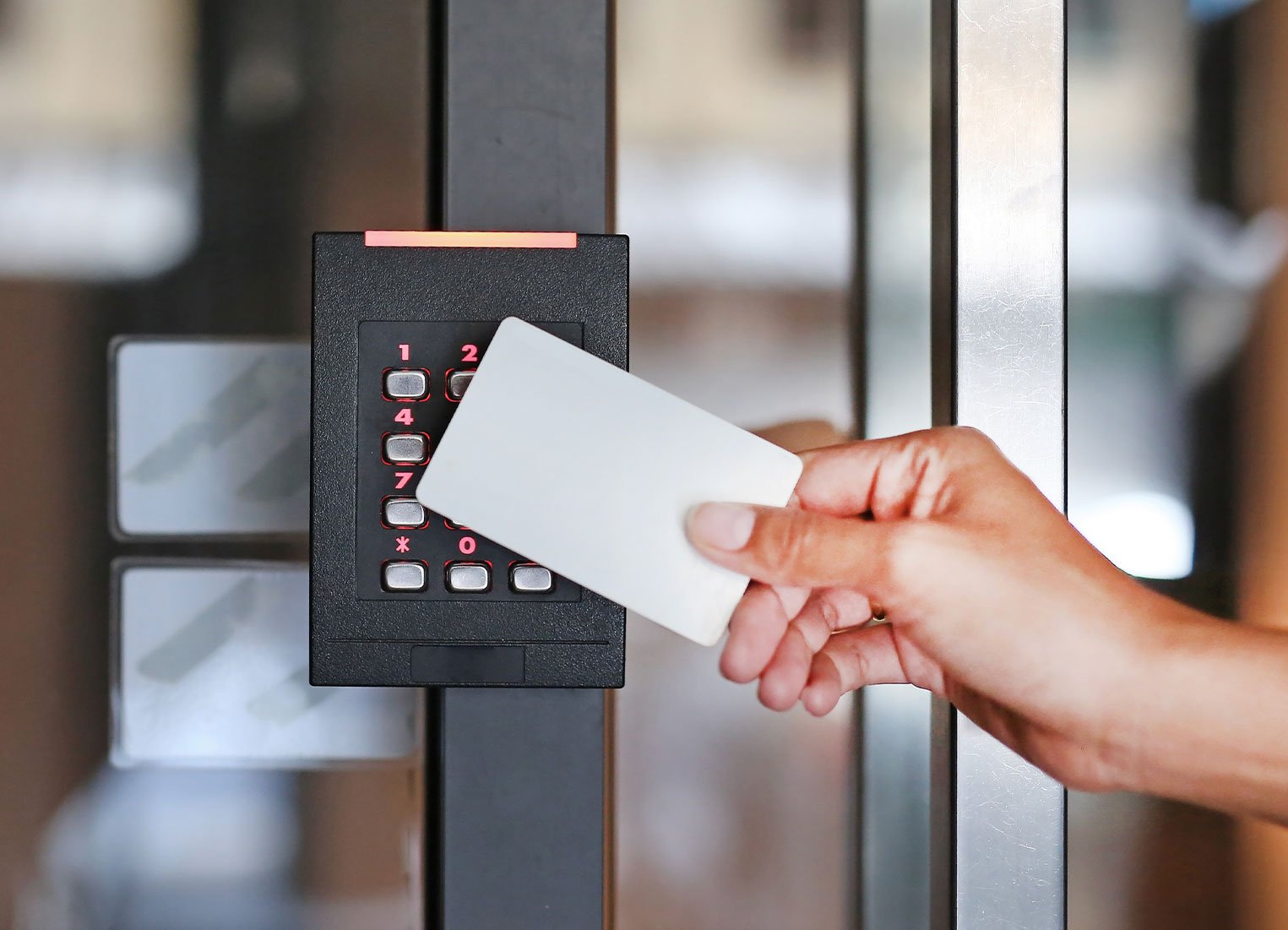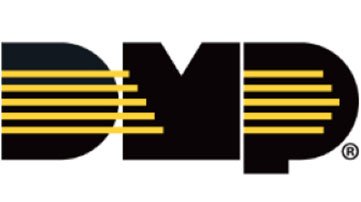Enterprise-Wide Managed Access Control Services
Get the next-generation, cloud-based, managed access control solutions that offer complete flexibility to define door access based on roles, shift hours, and locations with the option to gain enhanced insights using Interface’s video monitoring capabilities.

Managed Access Control Can Help Solve Common Problems
It’s Time to Upgrade from Locks and Keys
Keeping Up with Staffing Changes Is Challenging
Why You Should Switch to Managed Access Control
Align Access Management to Staff Schedules
Manage Access at Any Number of Locations
Choose from a Variety of Access Validation Options
Expand Capabilities through Integration
Combine video monitoring with access control insights to verify emergency events, audit security incidents, and break-ins, and ensure compliance with access control policies.
Identify and Fix Access Vulnerabilities
Tighten Security for High-Value Assets
We Partner with Leading Access Control Brands

Digital Monitoring Products (DMP)

Honeywell Pro-Watch
Frequently Asked Questions
Managed access control is a service offered to businesses by managed service providers to implement a comprehensive access control system. The service includes defining rules and standard operating procedures for accessing secured rooms or locations, enabling complete management of access to employees, handling emergency events, reviewing performance data, and making improvements. Managed access control allows customers to rapidly roll out a unified access control system for new locations.
- Proximity sensors: These sensors use radio frequency identification (RFID) or Bluetooth technology to detect the presence of a key fob or access card.
- Biometric sensors: These sensors use physical characteristics such as fingerprints, iris scans, or facial recognition to grant or deny access.
- Keypad sensors: These sensors require a code or PIN to be entered in order to grant access. Some of them even have a dynamic PIN entry requirement to secure critical areas.
- Smart card readers: These readers require a smart card to be inserted in order to grant access, which can include a combination of a physical card and a PIN number.
- Barcode readers: These readers scan a barcode or QR code to grant access, which can be printed on a physical card or displayed on a mobile device.
- Electromagnetic locks: These sensors offer enhanced holding power and are resistant to brute force attacks to force open doors or gates.
Access control systems are commonly used in multi-location businesses such as retail chains or restaurants to ensure the security of their facilities, protect their assets, monitor employee and visitor activity.
- Restricting access to sensitive areas: Access control systems can be used to limit access to certain areas of a building, such as server rooms, stock rooms, or executive offices, to authorized personnel only. This helps prevent theft, damage, or unauthorized use of company resources.
- Managing employee access: Access control systems can be used to monitor employee entry and exit times, and restrict access to certain areas based on job responsibilities or work schedules. This can help improve employee productivity and reduce the risk of employee theft or misconduct.
- Monitoring visitor access: Access control systems can be used to track the entry and exit of visitors to a building or parts of a building, and ensure that they are authorized to be there. This can help prevent theft, sabotage, or other security breaches by unauthorized individuals.
- Managing access across multiple locations: Access control systems can be used to manage access across multiple locations in a business, allowing employees to use a single access card or credential to gain entry to all facilities. This can help improve operational efficiency and reduce the administrative burden of managing multiple access systems.
- Emergency response: Access control systems can be used to quickly lock down a building or specific areas within a building in the event of an emergency, such as a fire or active shooter situation. This can help prevent unauthorized individuals from entering or exiting the building, and protect the safety of employees and visitors.
Managed access control services include turnkey implementation of a cloud-enabled access control system, including solution design, hardware procurement, and implementation. The service provider will take complete responsibility for the following ongoing tasks:
In-house access control implementation often lacks critical capabilities offered by a managed access control service provider such as:
- Lack of Expertise: In-house loss prevention or asset protection teams may not have the expertise in deploying a wide range of advanced access control systems. Practical issues during implementation or post-implementation issues can often derail expensive programs without in-house expertise.
- Cost-effectiveness: Managed access control solutions provided by third-party service providers are typically more cost-effective than in-house solutions. Third-party providers have economies of scale that allow them to offer their services and the hardware at a lower cost than if you were to manage the access control system yourself.
- Access to Best Practices: Third-party service providers have access to best practices in access control solution design, framing SOPs based on business risks, identifying exceptions, and integrating access control systems with other sensors such as security cameras or intrusion alarm systems.
Pros of Wired Access Control Systems:
- Reliability: Wired systems are generally more reliable than wireless systems, as they do not depend on radio frequency transmissions which can be disrupted by interference or signal blockages.
- Security: Wired systems are less vulnerable to hacking or signal interception than wireless systems, as they use physical wires to transmit data.
- Power supply: Wired systems do not require batteries, as they are powered by the electrical grid or PoE (Power over Ethernet).
Cons of of Wired Access Control Systems:
- Installation cost: Wired systems require the installation of physical wires, which can be expensive and time-consuming.
- Flexibility: Once a wired system is installed, it is difficult to make changes to the layout without significant additional costs and disruption.
- Maintenance: Wired access control systems may require periodic maintenance and repairs to ensure that the wiring and connections remain in good condition.
Pros of Wireless Access Control Systems:
- Ease of installation: Wireless systems can be installed quickly and easily, without requiring the installation of physical wires.
- Flexibility: Wireless access control systems can be easily reconfigured or expanded to accommodate changing needs.
- Cost: Wireless systems may be less expensive to install than wired systems, especially in buildings with difficult wiring or retrofitting challenges.
- Convenience: Wireless systems can be remotely managed and monitored, making them convenient for security teams.
Cons of Wireless Access Control Systems:
- Reliability: Wireless systems may be less reliable than wired systems, as they are subject to interference and signal disruptions.
- Security: Wireless systems may be more vulnerable to hacking or signal interception than wired systems, as data is transmitted through radio waves.
- Power supply: Wireless systems may require batteries, which need to be replaced periodically.
- Enhanced Security: By integrating a physical access control system with a corporate identity management system, organizations can ensure that only authorized individuals can access sensitive areas or information. For example, an employee's access privileges can be automatically updated or revoked when they change roles or leave the organization, reducing the risk of unauthorized access. Additionally, by using two-factor authentication or other advanced security measures, organizations can further increase the security of their access control system.
- Streamlined Administration: By automating the process of creating, updating, and deleting user accounts, integration with a corporate identity management system can help to streamline administrative tasks and reduce errors. For example, when a new employee is hired, their access privileges can be automatically provisioned based on their role in the organization, rather than having to manually add them to each system or location they need access to.
- Improved User Experience: By enabling SSO across multiple physical access control systems or locations, integration with a corporate identity management system can make it easier for users to access the resources they need without having to remember multiple passwords or use multiple access cards. For example, an employee could use their corporate badge to access different buildings or rooms across the organization.
- Simplified Compliance: By providing centralized logging and reporting capabilities, integration with a corporate identity management system can help organizations to meet compliance requirements, such as those mandated by regulations like SOX. For example, organizations can easily generate reports on who has accessed certain areas or information, and when, in order to demonstrate compliance with regulatory requirements. Additionally, by integrating with a SIEM system, organizations can monitor access events in real-time and respond to potential security incidents more quickly.
Transform Your Access Control System
Related Services